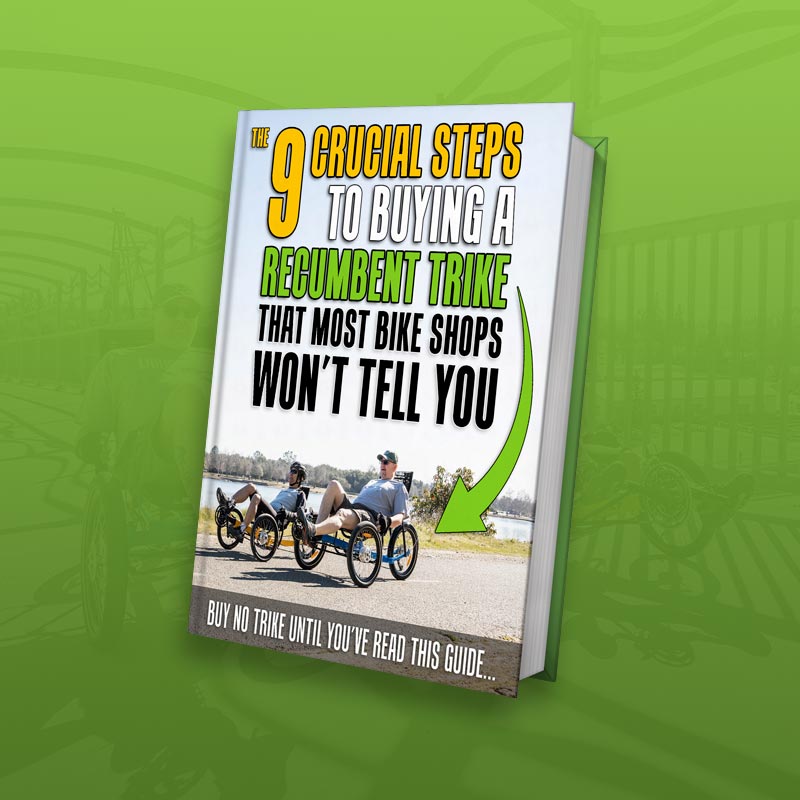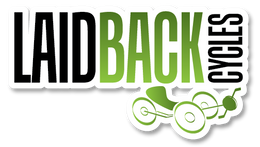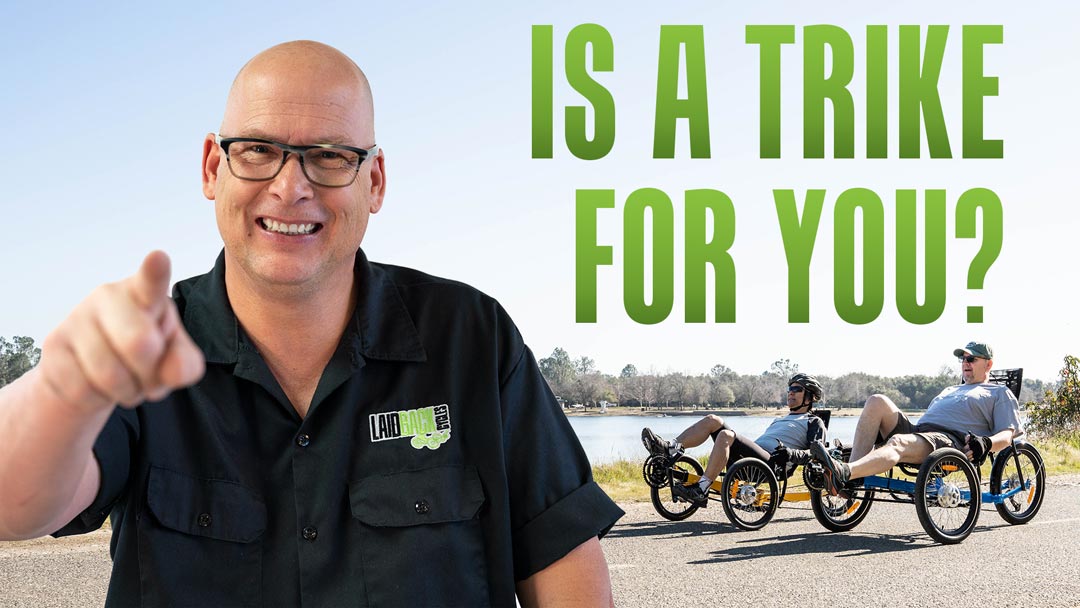Recumbent Trike Maintenance
Riding a recumbent tricycle allows you to get outdoors, spend time with friends and enjoy all the health benefits you would when out cycling on a traditional two-wheeler. What many people love about their recumbent trikes is that they not only help us maintain our bodies but require little maintenance themselves. That said, the more often you enjoy time out on your trike, the more wear and tear there is on the parts.
As a result, we always figure it’s worthwhile for our customers to understand some recumbent trike maintenance basics so they are better prepared if something should happen when out and about. Here’s our recumbent trike maintenance overview to keep you and your trike in motion.
Why is Trike Maintenance Important?
Like any mechanism, your trike naturally begins to wear down over time. As mentioned, trikes are relatively low maintenance. However, the better care you take of your trike, the better it performs and the less likely it is you’ll be caught out on the trails in need of repairs.
Two Types of Maintenance
When it comes to adult trike maintenance there are two types requiring attention:
- DIY: These are small things you can do on your own, preferably every time you go out on your trike. This includes things like checking your tires to make sure they are properly inflated, or that your chain is properly lubed.
- Shop: You should also bring your trike in for service to increase the longevity of your trike and ensure safety, functionality, and performance.
If you notice your trike doesn’t feel right when out riding, you should bring it into your local shop before something serious happens.

How Often Does a Trike Need Maintenance?
We offer a free 90-day tune-up after you buy your trike to make sure your trike is in great shape after the initial break-in period. We then recommend ongoing maintenance every 6 to 12 months depending on how frequently you ride your trike.
What Parts of the Trike Require Regular Maintenance?
Trikes require the same type of maintenance as a two-wheeler bike. They have very similar components you can learn to care for yourself, or that you can take to a local bike maintenance shop like Laid Back Cycles. The main components requiring ongoing attention to optimize performance include:
Tires
Your tires take a lot of abuse when out on the road. This gets even worse on rougher, uneven terrain. Not only do tires wear down over time, but they also lose air pressure and can get knocked out of alignment. Tires, therefore, require the following maintenance:
- Check your tires regularly to ensure they remain at the pressure recommended by the manufacturer. Softer pressures are common for trikes designed for cruising, while higher pressure is recommended for high-performance rides where speed is important. If tire pressure drops quickly, it could be time to replace the inner tube due to a leak.
- Check your tires for signs of “balding” where the treads are completely gone or uneven.
- Check the wheel rims to make sure the tires are balanced and look uniform as you spin the wheels. If you see the wheels are wobbling, you should bring your trike in for service as it could be there is a broken or loose spoke, or the wheel bolts are loose. Strange noises or a rough feeling when you spin the pedals could mean you have to replace or repair the bearings.
Chain
Your chain needs regular lubrication and cleaning. How often you do this varies based on the type of environment you tend to ride. On average, your chain should be lubricated every 200 miles. All you have to do is turn your pedals and apply the lubricant for one complete rotation. To avoid drips and wasted lubricant choose a lubricant that comes with an applicator for a more even, less messy application.
Brakes
Brakes can loosen up over time, especially if you have a locking mechanism. Brakes are best left to the pros because faulty brakes can lead to serious accidents. However, you can check your cable housing before heading out for a ride to see if they are loose. Some common brake issues include worn brake pads or worn housing or cables.
Cables will slowly stretch which can cause inaccuracy in the brakes and shifters. Signs your shifters are falling out of alignment include a clicking and grinding noise when you try to shift gears or when riding. In a pinch, if you feel the shifters are not working properly, you can do a quick home adjustment. You have to raise the back wheel and then bring the barrel down all the way. Then turn the barrel until that clicking noise stops. Be sure to arrange to have it repaired by a pro shop as soon as possible.
Bolts
A loose bolt can be tightened at home as a temporary fix. However, bolts on your trike are “torqued” when built and must be torqued correctly for safety and functionality.

Trouble Shooting Maintenance Tips
The most common issue you are likely to run into is a flat tire. The front and back tire require different steps:
Front Flat Tire
Traveling with an emergency repair kit makes dealing with a flat tire easier. You need to remove the tire using a tire lever that separates the tire from the rim. This allows you to remove the inner tubing. Use a mini pump to fill the tube with air so you can locate the leak. Once you know where the leak is, let the air out and then prep the tube by roughing it up with the tool in your kit. Apply the vulcanizing agent and let it dry completely before applying the patch. Add a bit of air into the tube and place it back in the rim. Then carefully put the tire back into place and finish pumping up the tire.
Back Flat Tire
The entire back tire must be removed in order to patch the leak. Undo the quick release and gently take the wheel off the trike and follow the same steps above. To put the tire back on, shift the bike to its lowest gear, place the gear cluster in the middle of the chain, and then flip the derailer back in place. Tighten the quick release.
These recumbent trike maintenance tips will keep your trike ready for the road. To make sure your trike is safe and ready to ride, set up an appointment for service with the Laid Back Cycles team.
Watch this trike maintenance video by Master Tech James:





